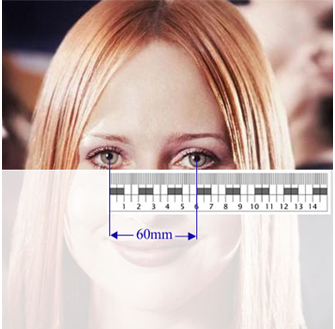| Home --> About Prescriptions |
| Prescription Information |
| Your prescription provides us with the necessary information to fabricate your eyeglasses correctly. Below is a sample of the most common type of glasses prescription that doctors use. |
| Please do not hesitate to contact us if you have any difficulties understanding or entering your glasses prescription. |
| |
 |
| 1. |
DV is an abbreviation for Distance (dist.). |
| 2. |
NV is an abbreviation for Reading (near). |
| 3. |
CYL is an abbreviation for Astigmatism (cylinder). Some prescriptions are written in (-) cylinder and some are written in (+) cylinder. If your doctor omitted this information, please leave it blank when submitting your order. |
| 4. |
Reading-only eyeglasses: Some prescriptions are written separately for reading or in its entirety (as “NEAR”, “NV” or “NVO”). For reading-only prescriptions, enter the numbers exactly as they are on your prescription and check “Reading” for lens type when ordering. |
| 5. |
Prescription Abbreviations and Definitions
a) OD = right eye
b) OS = left eye
c) OU = both eyes
d) PL = PLANO; a placeholder for the number zero
e) SPH = SPHERE power; the (total) power
f) DS = diopters sphere (you have sphere power only)
g) CYL = CYLINDER power; the amount of astigmatism correction
h) X = axis; X 80 or AXIS 080
i) ADD = the amount of power that gets added to the distance prescription (this creates your reading-only prescription) or for the lower portion of your bifocals/progressives.
j) NV = near-vision (your prescription is for reading only)
k) PD = pupillary distance (the measurement in millimeters (mm) between both pupils)
l) -75 = -0.75
m) +125 = +1.25
|
| 6. |
Your prescription may be written out on a blank Rx pad instead of a pre-made Rx pad for eyeglasses only. The top number is the prescription for the right eye and the bottom number is the prescription for the left eye. |
| 7. |
If there are no numbers for CYL, AXIS or ADD in your prescription, do not enter anything in these fields when ordering. When only one number appears for each eye, it is for the sphere power only. |
| 8. |
Occasionally, the numbers in your prescription will not include decimal points. This means that +1.25 = +125 and -0.75 = -75. Also, an axis of 80 = 080 and 6 (or 06) = 006. |
| 9. |
For some prescriptions there will be no astigmatism correction for one or both eyes. Your doctor may just write the sphere power alone, or may use abbreviations like sph (“sphere”) or DS (“diopters sphere”). |
| 10. |
If there is only one ADD power on your prescription for bifocals, this means that the same ADD power is used for both eyes. If there is no ADD power given, leave this section blank when ordering. |
| 11. |
Pupillary Distance (PD)
Pupillary Distance is the distance from the center of the pupil (black circle) in one eye to the center of the pupil in the other. |
| |

|
| |
Pupillary Distance measuring instructions using the Pupillary Distance ruler:
1. Put the millimeter ruler on the bridge of your nose.
2. Ask someone to stand approximately 2 feet away from you and measure the distance between the centers of your pupils (the black circle in your eyes).
3. You can measure pupillary distance yourself by using a mirror.
You may ask your doctor or a licensed Optician to obtain this information from your file or they can take the measurement for you.
Note: Typical adult’s pupillary distance measurements are as follows: (54mm to 66mm).
Typical children’s pupillary distance measurements are as follows: (41mm to 55mm).
|
| |
* New York State residents must have their pupillary distance measured by a doctor or licensed Optician.
|